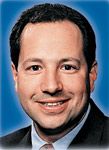- Benign Prostatic Hyperplasia
- Hormone Therapy
- Genomic Testing
- Next-Generation Imaging
- UTUC
- OAB and Incontinence
- Genitourinary Cancers
- Kidney Cancer
- Men's Health
- Pediatrics
- Female Urology
- Sexual Dysfunction
- Kidney Stones
- Urologic Surgery
- Bladder Cancer
- Benign Conditions
- Prostate Cancer
New 401(k) option can maximize investments
As someone who is 20 years away from retirement, does it still make sense to contribute to my 401(k) plan with the market suffering; and if it does, what limits and rules should I be aware of?

Key Points
Q: I have heard that many physicians who were planning to retire must now delay their plans due to the drop in the stock market. As someone who is 20 years away from retirement, does it still make sense to contribute to my 401(k) plan with the market suffering; and if it does, what limits and rules should I be aware of?

Younger physicians are also affected, as portfolio rates of return often fall well below their initial expectations.While the market will continue to move in various cycles, both negative and positive, now is the time for all physicians to re-evaluate their qualified retirement plans to be certain that they are taking advantage of both the new increased limits and understanding a major change affecting 401(k) plans.
A traditional 401(k) plan is subject to two nondiscrimination tests: the actual deferral percentage (ADP) test for employee elective deferrals and the actual contribution percentage test for matching contributions. Now, as an alternative, an employer may adopt a "safe harbor" 401(k) plan, which is not subject to non-discrimination testing.
Under current tax law, there are two safe harbor alternatives to the ADP test. In the first, the employer makes a non-elective contribution of 3% to each eligible highly compensated and non-highly compensated employee. The other alternative offers the employer the opportunity to make matching contributions of 100% of non-highly compensated employee elective contributions up to 3% of pay, and 50% of non-highly compensated employee additional elective contributions up to 5% of pay. All matches and non-elective contributions made to satisfy the safe harbor must be immediately vested. In addition, the employer must notify employees within a reasonable period of time, prior to the plan year, of their rights and obligations under the safe harbor arrangement.
By meeting the above criteria, many highly compensated physician/owners will find they will actually be able to accrue a greater benefit for themselves. With the objective of most qualified retirement plans being tax-advantaged growth for future income needs, obviously the greater amount allowed to be invested annually can make a dramatic difference down the road. Often acting as contribution limitations, guidelines are in place to ensure that there is not a great disparity of contributions, with highly compensated key employees receiving the lion's share. The safe harbor alternative to the traditional 401(k) plan will enable many physicians to accrue a greater retirement benefit while still conforming to IRS guidelines. Based on the history of prior employee participation, the safe harbor plan may prove to be a viable alternative for those wanting to maximize their retirement planning options.
